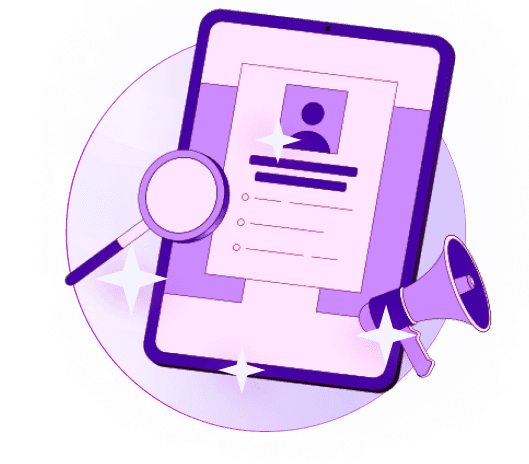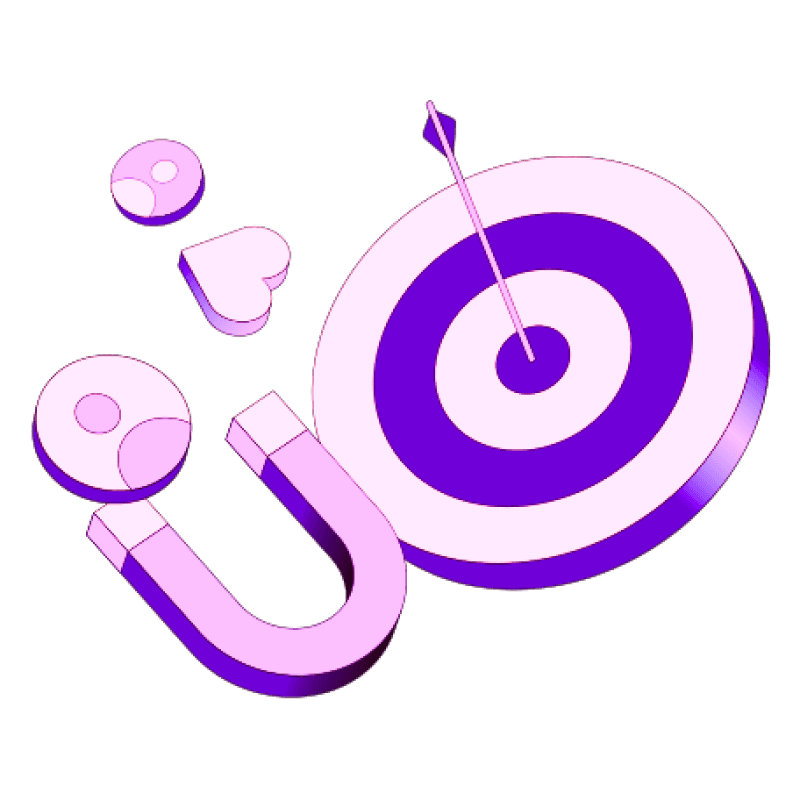Blogs
Articles

How to Build a Cold Outreach Automation System That Actually Works (Step-by-Step Guide)
Did you know that all but one of these 10 salespeople think over cold outreach automation as the most important part of their sales strategy?
Sales teams embrace this approach and with good reason too. Manual cold email outreach drains time. Sales teams spend hours to research prospects, craft messages, and send follow-ups. This leaves little time to close deals. On top of that, it matters to customize - 71% of customers want experiences that speak to their needs.
This piece shows you how to build a cold outreach automation system that delivers results. You will learn practical strategies to boost engagement, enhance lead quality, and get more conversions. The system helps you save time and cut operational costs as you scale with multiple inboxes and define your ideal customer profile.
Step 1: Define Your Ideal Customer Profile (ICP)
A successful cold outreach automation system starts with a clear picture of your target audience. Your Ideal Customer Profile (ICP) represents the perfect company that would benefit from your solution and provide the most value to your business. Companies that use the ICP framework achieve a win rate of at least 68%.
Why targeting matters in cold outreach
The "spray and pray" approach of blasting thousands of emails to random prospects doesn't work anymore. Targeting forms the foundation of successful outreach campaigns for four key reasons:
Your team can find potential customers faster. A narrower target group makes prospecting quick and straightforward. You can craft messages that convert because you understand your audience's shared pain points. The process becomes crucial for email outreach automation, especially with prospects in different time zones. Your sales team can focus on pre-qualified, quality leads.
How to identify buying signals
Buying signals are live actions that show a prospect's readiness to purchase. These signals come in many forms:
Digital activity like downloading gated content, checking pricing pages, or reading case studies
Company updates such as new funding rounds, leadership changes, or expansion plans
Direct questions about pricing, integrations, or terms and conditions
A prospect who shows these signals is ready to talk. Take a recruitment agency for example - a company posting a job ad becomes an ideal lead because they need to hire someone right away.
Tools to research your ICP
These tools help you spot and research ideal customers:
CRM software to analyze your current customer base and find patterns
Data enrichment services like Persana to gather company details including size, industry, and tech stack
Apollo to build prospect lists matching your ICP criteria through various filters
Social media platforms to track industry conversations and company news
By making use of these tools and studying your best customers, you can create an ICP that powers more targeted and effective cold outreach automation.
Step 2: Build a Lead List That Matches Your ICP
Your ideal customer profile sets the stage for building a lead list that matches your exact needs. This groundwork will determine how well your cold outreach automation system works.
Manual vs automated lead sourcing
Manual lead sourcing relies on hands-on methods like LinkedIn research, cold calling, and personalized email outreach. This approach helps build stronger relationships and gives better control over lead quality. The biggest problem lies in the time investment—manual prospecting takes 8-10 hours per lead to research, verify, and reach out. This method doesn't deal very well with scaling as your business grows.
Automated lead generation makes use of information to streamline the process. This method can cut manual work by up to 80% and handle thousands of leads in minutes instead of days. The original setup needs some learning time, but automated systems run continuously and improve efficiency while cutting cost per lead from USD 30-100 (manual) to USD 5-20 (automated).
Using scrapers and B2B databases
Lead scraping tools pull contact information from websites at scale. Tools like Contact Details Scraper can gather emails, phone numbers, and social media handles from any site. B2B databases are a great way to get verified contacts with extensive filtering options:
Cognism's GDPR-compliant leads come with phone-verified numbers at 87% accuracy
SalesIntel gives human-verified contacts and intent data
Apollo.io has email automation features among its contact database
These databases let you search specifically for decision-makers matching your ICP criteria instead of spending time on unqualified prospects.
Verifying email addresses for accuracy
Email verification is essential—38% of cold emails never reach inboxes because of invalid addresses. Verification keeps your sender's reputation intact and stops your domain from being flagged as spam.
Tools like Verifalia, Hunter.io, or NeverBounce can confirm syntax, domain, and mailbox status in live. Regular checks (quarterly or bi-annually) help maintain list hygiene as contacts switch jobs or close accounts.
Step 3: Set Up Your Cold Outreach Automation System
You need a solid technical foundation for your outreach strategy after you've put together a quality lead list. A cold outreach automation system that works needs careful thought about platforms, email setup, and ways to make sure your emails get delivered.
Choosing the right cold email platform
Your outreach system needs a reliable platform as its foundation. Here are the key features you should look for:
Automation capabilities that help you stay consistent as you scale up
Uninterrupted integration with your current tools and email providers
Personalization features that add relevant information automatically
Template systems to build campaigns quickly
Simple reporting dashboards with applicable information
Lemlist stands out with its verified lead building and database of over 450 million contacts. Saleshandy gives you unlimited sequences and email warm-up. Hunter Campaigns shows you performance data from your campaigns, accounts, and team members.
Connecting your email accounts safely
Email authentication plays a crucial role in getting your emails delivered. Start by setting up SPF and DKIM records in your domain's DNS settings - this stops scammers from using your domain to send fake emails. Your sending volume determines your IP strategy. Shared IPs work well if you send fewer than 500 emails daily. Dedicated IPs make more sense for larger operations sending over 50,000 monthly emails.
Creating sequences with follow-ups
Most replies come after three follow-up emails. This makes a four-step sequence your best bet - one original email plus three follow-ups. Each industry has its own pace, but 3-5 business days between emails usually gets good results. Make each message personal while keeping the thread consistent to build familiarity.
Scheduling and time zone optimization
Time zones can make or break email engagement. Statistics show Sunday emails get 18.7% of weekly opens. Smart automation tools let you send emails at the perfect time in each recipient's time zone. This simple change can boost engagement rates by up to 20%.
Avoiding spam filters with warm-up tools
Email warm-up tools are vital for successful delivery. These tools slowly increase your sending volume and create natural engagement patterns. New email accounts need 14-21 days of warm-up before launching campaigns. Start small with 10-20 daily emails and add 10-20 more each week. Your open rates should hit around 50% after this initial phase.
Step 4: Monitor, Optimize, and Scale Your Outreach
Your cold outreach automation system needs vital monitoring to succeed in the long run. The optimization stage sets apart amateurs from professionals in the outreach game.
Tracking open, click, and reply rates
The metrics that truly matter deserve your attention. Many platforms track dozens of datapoints, but these standards matter most:
Open rate: Target 60%+
Reply rate: Shoot for 20%+
Bounce rate: Stay below 3%
Unsubscribe rate: Keep under 10%
Reply rates ended up being more valuable than open rates for cold outreach. Your adjusted reply rate (replies divided by opens) gives a clearer picture of email performance by separating content effectiveness from deliverability issues.
A/B testing subject lines and messages
Success in A/B tests depends on these key principles:
Change just one element at a time
Use a sample size of 100-200 prospects minimum
Look at all metrics (opens, clicks, replies) for the full picture
The strongest evidence shows subject lines affect open rates directly, while email content and CTAs drive reply rates. You might want to test personalization elements like prospect names or company references, which can boost open rates by up to 26%.
Scaling with multiple inboxes and teams
The system that works well needs inbox rotation across multiple email accounts to scale. This prevents any single inbox from hitting daily sending limits. Start with 10-20 emails daily per inbox, then add 10-20 more each week during warm-up.
When to add multichannel outreach
Add channels like LinkedIn or phone calls after your email system shows steady results. Multichannel approaches boost engagement as people see your message on different platforms. Each channel needs its own tracking—call connect rates for phones and connection acceptance rates for LinkedIn. The way these channels work together matters most, especially how LinkedIn activity increases email engagement or voicemails drive more replies.
Conclusion
A methodical approach works better than random tactics when building an effective cold outreach automation system. In this piece, we've covered four key steps that are the foundations of any successful outreach strategy. Your ideal customer profile acts as the cornerstone that ensures you target prospects with the highest conversion potential. On top of that, it helps create a quality lead list that matches these specifications and improves campaign effectiveness while saving resources.
Setting up your automation system takes time but pays off through consistent execution and adaptable processes. Email authentication, sequence creation, and warm-up protocols protect your sender's reputation and boost deliverability rates. The optimization process reshapes the scene by turning good campaigns into great ones through testing and refinement.
Cold outreach automation ended up being a mix of art and science - creative messaging combined with evidence-based decision making. This systematic approach helps balance personalization with efficiency. Your sales team can focus on high-value activities instead of repetitive tasks. Your business can achieve higher conversion rates and reduce operational costs at the same time.
Persana.ai offers a detailed platform that streamlines the cold outreach process with advanced personalization capabilities for teams who want to implement these strategies without building everything from scratch.
FAQs
Q1. What is cold outreach automation and why is it important?
Cold outreach automation is a system that uses software to manage and streamline communication tasks like sending emails, texts, and follow-ups to potential customers. It's important because it allows businesses to reach a large number of prospects efficiently, saving time and resources while maintaining personalization.
Q2. How do I create an effective Ideal Customer Profile (ICP) for cold outreach?
To create an effective ICP, analyze your best existing customers, use CRM software to identify patterns, and leverage data enrichment services. Focus on factors like company size, industry, and specific pain points. A well-defined ICP helps you target the right prospects and craft more relevant messages.
Q3. What are some key metrics to track in cold outreach campaigns?
Important metrics to track include open rates (aim for 60%+), reply rates (target 20%+), bounce rates (keep below 3%), and unsubscribe rates (maintain under 10%). Pay special attention to reply rates, as they often indicate the effectiveness of your email content and overall campaign success.
Q4. How can I improve email deliverability in my cold outreach efforts?
To improve email deliverability, set up proper authentication (SPF and DKIM records), use email warm-up tools, and gradually increase your sending volume. Start with 10-20 emails daily per inbox and increase by 10-20 weekly.

Create Your Free Persana Account Today
Join 5000+ GTM leaders who are using Persana for their outbound needs.
How Persana increases your sales results
One of the most effective ways to ensure sales cycle consistency is by using AI-driven automation. A solution like Persana, and its AI SDR - Nia, helps you streamline significant parts of your sales process, including prospecting, outreach personalization, and follow-up.



